Top Reasons Turkey Industries Choose Pallet Inverters for Cold Chain Efficiency and Hygiene Standards
As someone who has spent his entire career on the factory floor, first as an engineer and now as a factory owner myself, I've learned that the biggest gains in efficiency often come from the most unexpected places. You, as a leader in a demanding industry like steel, are constantly looking at the big picture: production targets, energy costs, and major capital investments. But sometimes, a simple, robust machine designed to solve one specific problem can have a ripple effect across your entire operation. It can cut costs, improve safety, and even unlock the potential of your larger systems. Today, I want to talk about one such machine: the pallet inverter. We'll look at why a major industrial hub like Turkey has embraced them, and how the principles they're using in sectors like food and pharmaceuticals can be directly applied to increase profitability and resilience in your steel mill.
Turkey's industries, especially those in the cold chain and pharmaceutical sectors, choose pallet inverters primarily to enhance operational efficiency and meet stringent hygiene standards. These machines allow for the rapid, safe transfer of goods from internal-use pallets to shipping pallets, or vice-versa. This simple action prevents cross-contamination, protects product integrity, eliminates manual handling risks, and streamlines logistics. For Turkish exporters, this is key to complying with international quality regulations and maintaining a competitive edge.
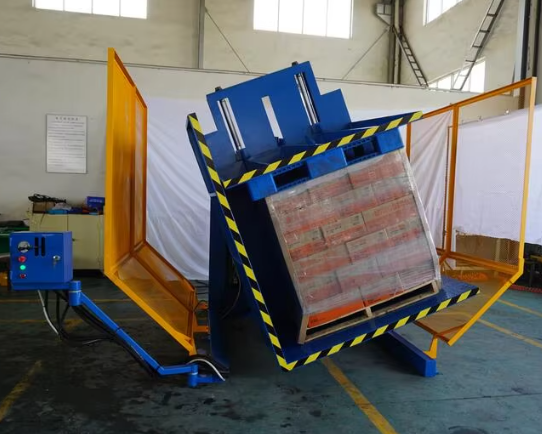
I know what you might be thinking. "Vincent, that's interesting, but I'm running a steel mill in Mexico, not a food processing plant in Turkey. What does this have to do with me?" I ask you to stay with me. The core challenges are the same across all heavy industries: moving heavy things efficiently, keeping them safe, and doing it at the lowest possible cost. The logic that makes a pallet inverter essential for a Turkish food exporter is the same logic that can help you hit your goal of an 8% reduction in operational costs. Let's break down how.
How Do Pallet Inverters Directly Boost Operational Efficiency?
In any high-volume operation, from steel production to food packaging, you know that bottlenecks are the enemy of profitability. A single delay can cascade through your entire production schedule, hurting your ability to achieve that target of 95% equipment uptime. You have a multi-ton press stamping out parts or a rolling mill producing coils at an incredible rate, but the whole process can grind to a halt because of a simple, broken wooden pallet in the shipping bay. This forces your team into a slow, manual process of unstacking and restacking heavy, valuable product. It’s not just inefficient; it's a drain on morale and a direct hit to your output. A pallet inverter offers a purely mechanical, incredibly simple solution to this very common problem. By clamping and rotating the entire load, it turns a 30-minute manual job into a 60-second automated one.
A pallet inverter directly boosts operational efficiency by replacing a slow, dangerous, and labor-intensive manual task with a fast, controlled, and automated process. Think about the time it takes for two or three workers to carefully unstack a pallet of heavy goods, move the goods, and then restack them on a new pallet. This can easily take 20-30 minutes and carries a significant risk of product damage or worker injury. A single operator with a pallet inverter and a forklift can perform the same task in less than one minute. This massive time saving eliminates a common bottleneck in the logistics chain, increases your overall throughput, and frees up your skilled workers to focus on tasks that add more value to your business.
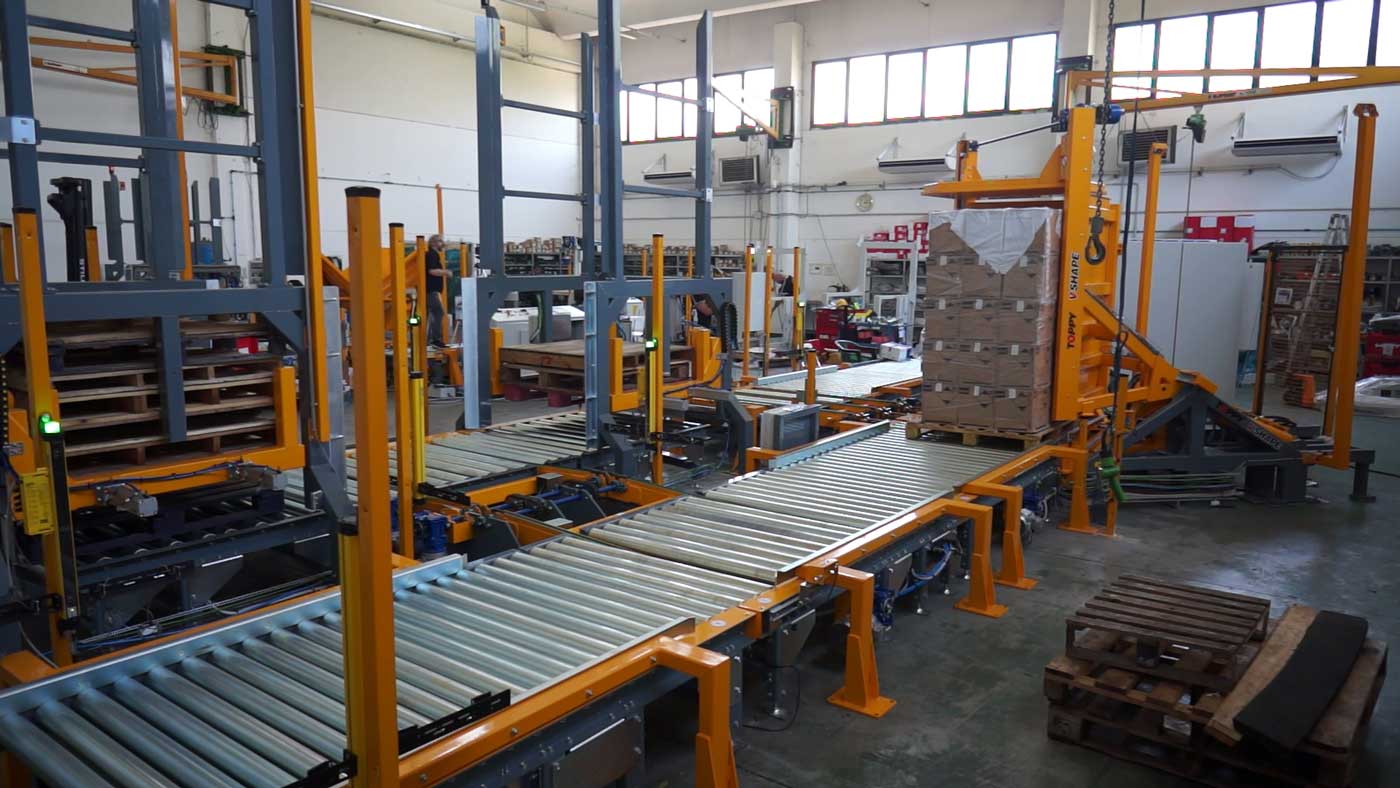
Diving Deeper: The Mechanics of Time-Saving
Let’s get into the engineering of it, because that’s where the real story is. As a fellow engineer, Javier, you appreciate the elegance of a simple solution. The contrast between the manual process and the machine process is stark.
The Manual Way:
- A forklift brings a pallet with a broken slat to an open floor area.
- Two or three workers begin manually unstacking the load. If it's steel coils or stacked plates, this is heavy, dangerous work.
- They have to be careful not to damage the product. Scratches, dents, or dropping a unit are all real risks.
- Once the old pallet is removed, they bring in a new one.
- They begin the slow process of restacking the entire load onto the new pallet.
- Finally, the forklift can move the load.
This entire sequence is unpredictable and filled with potential for delay and error.
The Pallet Inverter Way:
- A forklift places the entire load, broken pallet and all, into the inverter.
- The operator presses a button. The machine’s hydraulic clamping system secures the load from the top and sides.
- The machine smoothly rotates the entire load 180 degrees.
- The forklift removes the now-exposed broken pallet and immediately replaces it with a new one.
- The machine rotates back, and the forklift removes the secured load.
The process is predictable, safe, and incredibly fast.
Here's a simple breakdown of the impact:
| Metric | Manual Pallet Exchange | Pallet Inverter Exchange | Improvement |
|---|---|---|---|
| Time per Load | 20-30 minutes | ~1 minute | 95% Reduction |
| Labor Required | 2-3 Workers | 1 Operator | 50-67% Reduction |
| Risk of Injury | High (Lifting, Bending) | Minimal (Machine-operated) | Drastically Reduced |
| Risk of Product Damage | Moderate to High | Minimal | Drastically Reduced |
I remember visiting a client’s steel wire facility. They were losing several hours each week just dealing with damaged pallets under heavy coils of wire. The delays were making their shipping schedules chaotic. After we installed a heavy-duty inverter, the logistics manager told me it wasn't just about the time saved. It was the predictability. He could now guarantee that a load would be ready for shipment at a specific time. That kind of reliability is fundamental when you're pushing for 95% operational uptime.
Why are Pallet Inverters Crucial for Maintaining Product Quality and Safety?
In your business, product integrity is non-negotiable. A single steel coil with a dent from a forklift or a stack of sheets with rust from a moisture-damaged pallet can result in a rejected shipment. These rejections are costly, not just in terms of lost revenue and shipping fees, but in the damage they do to your hard-won reputation for quality. The frustrating part is that this damage often happens in the final stages of handling, frequently caused by something as simple as a low-quality wooden pallet required for shipping. You can't risk sending a customer a multi-ton order that might fail because the pallet collapsed. And the thought of a pallet of steel collapsing in your own yard? The safety implications are immense. Pallet inverters create a critical control point right before dispatch. They allow you to transfer your products from your high-quality, internal-use pallets to standard shipping pallets safely and securely, ensuring the product is perfect when it leaves your control.
Pallet inverters are crucial for maintaining product quality and safety because they create a controlled, gentle process for transferring goods. This mechanical handling minimizes the risk of dents, scratches, and other damages that are common during manual restacking. It also enables a "two-pallet" strategy: using durable, high-quality pallets within your factory and switching to cost-effective, one-way pallets only for final shipment. Most importantly, it provides a perfect opportunity to inspect the bottom of a load and remove any damaged product before it ever reaches your customer, safeguarding both your revenue and your reputation.
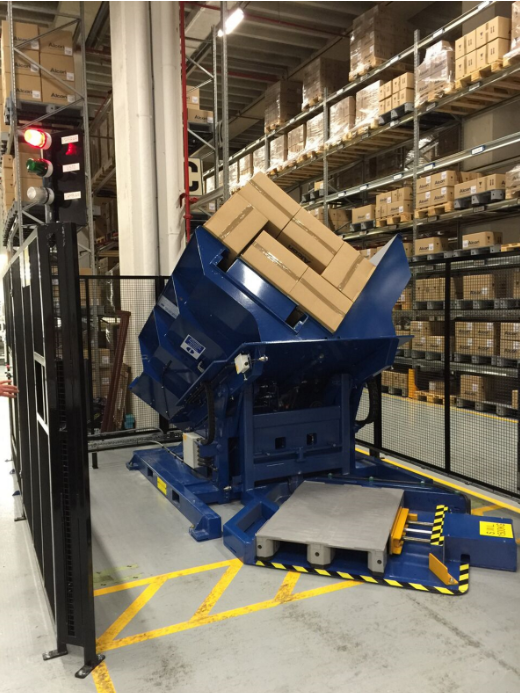
Diving Deeper: The Strategy of Quality Control
As a business owner, you know that strategy is about controlling variables. A pallet inverter is a strategic tool for controlling the variables of quality and safety in your logistics.
The "Two-Pallet" System
Think about the pallets inside your factory. For your automated systems, like an AS/RS or conveyors, you need high-quality, uniform pallets. These might be heavy-duty plastic or even steel pallets. They are a company asset, an investment. You don't want them leaving your facility. Shipping pallets, on the other hand, are a cost of doing business. They are typically cheaper wooden pallets designed for one-way journeys.
A pallet inverter is the perfect bridge between these two systems.
- Inbound: Raw materials arrive on cheap shipping pallets. You invert them onto your high-quality internal pallets to prevent introducing dirt, debris, or non-standard pallets into your clean, automated production environment.
- Outbound: Your finished steel products are stored on your durable internal pallets. Just before shipping, you use the inverter to transfer them to a standard, cost-effective wooden pallet for transport.
This simple process protects your pallet assets, reduces costs, and ensures your internal systems run smoothly.
The Quality and Safety Checkpoint
A pallet inverter is one of the best and easiest quality control stations you can implement. When you invert a full load, the bottom of the stack is now on top and easy to see. This is the perfect moment for a final inspection.
- Is there any sign of moisture or rust on the bottom sheets?
- Did the strapping leave an indent on the bottom coil?
- Is any of the protective wrapping torn?
You can spot these issues and fix them in seconds. Without an inverter, these problems would only be discovered by the customer.
From a safety perspective, the argument is even stronger. I built my company on the principle of engineering out risks. Manual handling of heavy loads is an unacceptable risk in a modern factory. A pallet inverter removes the need for lifting, bending, and twisting, which are leading causes of musculoskeletal injuries. It contains the load at all times, eliminating the risk of a stack collapsing on a worker.
| Hazard | Manual Handling of Steel Products | Using a Pallet Inverter |
|---|---|---|
| Musculoskeletal Injury | Extremely high risk from lifting heavy plates or parts. | Eliminated. The machine does all the work. |
| Falling Product | High risk during unstacking and restacking. | Contained. The load is secured by the clamp. |
| Forklift/Operator Errors | Multiple complex moves increase risk of collision/damage. | Simple, repeatable moves reduce error potential. |
As an engineer who started on the factory floor, I've seen a few near-misses that I will never forget. That's why I am so passionate about this. A pallet inverter isn't just about efficiency; it's about making sure every one of your team members goes home safe at the end of their shift.
What is the Real ROI of a Pallet Inverter in a High-Volume Operation?
Javier, as the owner of a 2-million-ton-per-year steel mill, I know every investment you make is scrutinized for its Return on Investment (ROI). You have to justify every capital expense and ensure it contributes to your strategic goals, like that target of lowering overall operational costs by 8%. It’s easy to look at a machine like a pallet inverter and categorize it as a "nice-to-have" rather than a "need-to-have." You might think your current manual process is "good enough." But what that view misses are the hidden costs that are silently eating away at your profit margin every single day: the cost of wasted labor, the cost of damaged product, the cost of lost pallet assets, and the potential cost of a workplace injury. When you analyze it properly, a pallet inverter isn't a cost center; it's a powerful tool for cost reduction with a clear and often surprisingly fast payback.
The real ROI of a pallet inverter in a high-volume operation comes from a combination of direct, measurable savings and significant indirect benefits. The direct savings are easy to calculate: drastically reduced labor hours for pallet handling and the elimination of losses from expensive in-house pallets leaving your facility. The indirect savings, while harder to quantify, are just as impactful: increased throughput from faster processing times, reduced costs from product damage, and the prevention of expensive workplace injury claims. In many heavy industrial settings, the total savings can lead to a full payback on the equipment in just 6 to 18 months.
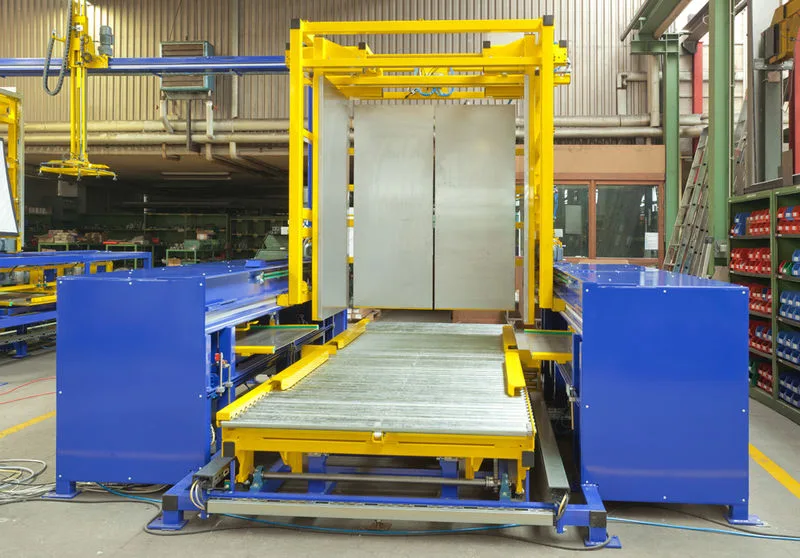
Diving Deeper: A Financial Breakdown for a Steel Operation
Let's put some real numbers to this, using a conservative model for an operation like yours. A thorough feasibility analysis is something I always recommend, but this will give you a clear idea.
Assumptions:
- Pallet exchanges per day: 50
- Manual handling time per pallet: 20 minutes (0.33 hours)
- Manual handling team: 2 workers
- Fully burdened labor cost: $25/hour per worker
- Pallet inverter cycle time: 2 minutes (handled by 1 forklift operator already on duty)
- Cost of a lost/damaged heavy-duty in-house pallet: $120
- In-house pallets saved per day by switching to shipping pallets: 15
- Value of product damage incidents prevented per year: $25,000
Now, let's calculate the annual savings:
| Savings Category | Calculation | Estimated Annual Savings |
|---|---|---|
| Labor Savings | (2 workers $25/hr 0.33 hr/load) 50 loads/day 250 days/yr | $206,250 |
| Pallet Asset Recovery | $120/pallet 15 pallets/day 250 days/yr | $450,000 |
| Damage Prevention | - | $25,000 |
| Total Estimated Savings | $681,250 |
Even if you cut these estimates in half, the financial case is overwhelming. The machine pays for itself very quickly and then continues to generate savings year after year.
This is the kind of analysis that separates a simple expense from a strategic investment. When I started my own factory, I had to learn this lesson quickly. I learned to look past the initial price of a machine and focus on its Total Cost of Ownership (TCO) and its potential to generate value. A pallet inverter is a classic example of an investment with a low TCO and a very high ROI. It directly addresses your cost pressures and your goal to boost your profit margin, making your entire operation more resilient against the market fluctuations that are a constant reality in the steel industry.
How Can Pallet Inverters Integrate with Modern Automation and Digitalization Goals?
You're a forward-thinking leader, Javier. Your focus on deploying MES, IoT sensors, and data analytics shows that you're building the steel mill of the future. You want a fully visible, highly automated operation where materials and information flow seamlessly. But there's a critical challenge: your sophisticated digital systems must interact with the messy physical world. An expensive Automated Guided Vehicle (AGV) or a high-tech automated warehouse (AS/RS) is designed for uniformity. It can be brought to a complete stop by a single broken wooden pallet or a pallet with non-standard dimensions, creating a frustrating bottleneck where your digital and physical operations fail to connect.
Pallet inverters are the essential physical interface that makes your digital strategy work. They act as a "standardization gateway" in your material flow. By installing a pallet inverter in-line with your conveyors, you can create a fully automated checkpoint. This station ensures that every load entering your core production or warehousing area is on a standardized, machine-readable, "known good" pallet. This simple step makes your entire automation ecosystem more robust, reliable, and efficient, allowing you to realize the full potential of your investment in digital transformation.
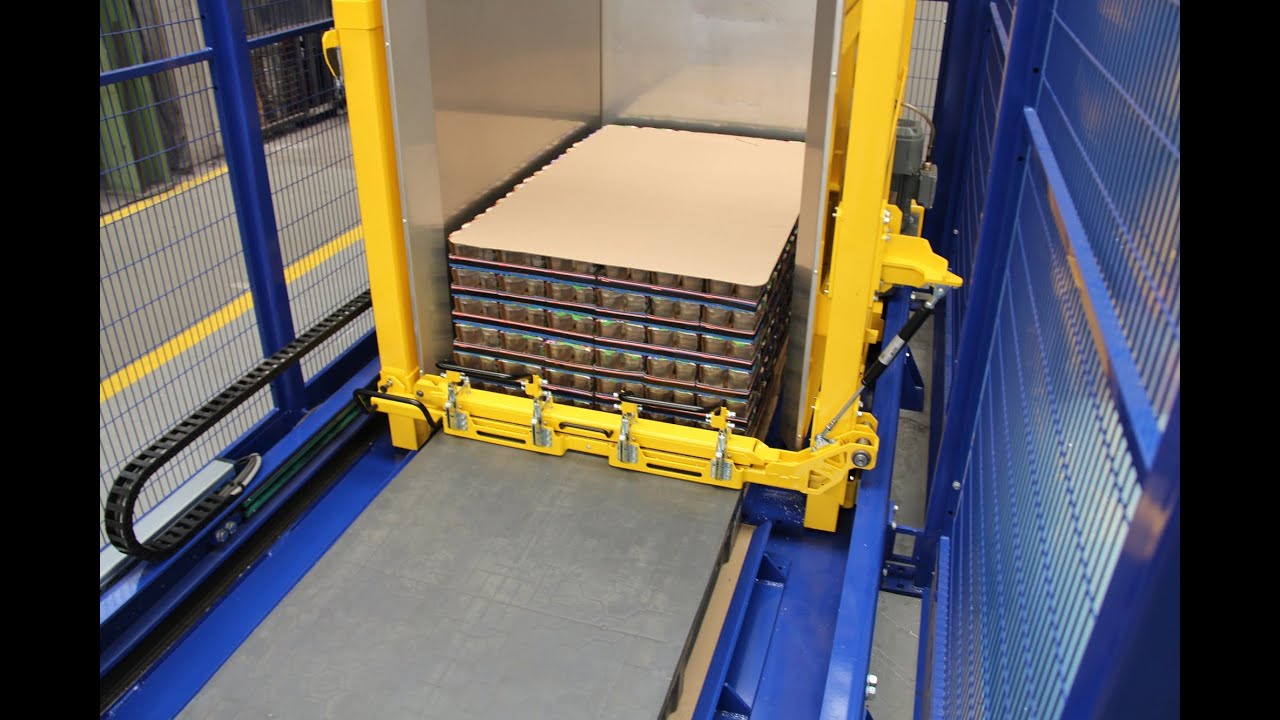
Diving Deeper: The "Handshake" of a Digital Factory
Imagine this fully automated workflow, which is becoming the standard in modern logistics:
- A supplier's truck arrives. A forklift unloads a pallet of raw materials. The pallet is a standard shipping pallet—wood, variable quality.
- The forklift places the load onto an infeed conveyor.
- The conveyor moves the load into a fully-enclosed, automated pallet exchange station.
- Sensors confirm the load is in position. The pallet inverter automatically clamps the load, inverts it, removes the old wooden pallet, and pulls a clean, standardized, RFID-tagged plastic pallet from an integrated dispenser.
- Now on a "known" pallet, the load continues down the conveyor to be picked up by an AGV.
- The AGV reads the RFID tag, confirms the load with your MES system, and transports it to the correct location in your AS/RS.
This seamless "lights-out" flow is only possible because of that automated handshake performed by the pallet inverter. It translates the unpredictable physical world into the standardized language that your automation systems understand.
Data Integration for Total Visibility
A modern pallet inverter is not just a mechanical device; it's an intelligent node in your IoT network. When integrated properly, it can:
- Scan Barcodes/RFID Tags: It identifies the product before and after the transfer.
- Weigh the Load: Integrated load cells can provide precise weight data for your WMS.
- Communicate with the MES: It can send a signal to your Manufacturing Execution System confirming that "Product X is now on Pallet Y and ready for the next stage."
This data provides another layer to the comprehensive production visualization you're aiming for. It closes the loop, giving you real-time tracking of materials as they transition from external to internal handling systems.
At SHJLPACK, we are increasingly involved in these kinds of integration projects. We don't just provide a wrapping machine or an inverter; we provide the "total solution" that connects it to the client's broader system. I've seen firsthand that a well-integrated pallet inverter is a foundational piece for any company serious about Industry 4.0 and digital transformation. It's a relatively small investment that future-proofs your facility and maximizes the ROI of your much larger investments in automation.
What Should You Look for When Choosing a Pallet Inverter Supplier as a Strategic Partner?
You've seen the technical and financial benefits. You understand the strategic role a pallet inverter can play. Now comes the most important decision: choosing the right supplier. The market is full of options, from low-cost, basic machines to highly complex systems. Making the wrong choice can leave you with an unreliable piece of equipment that doesn't fit your heavy-duty needs, breaks down at critical moments, and lacks the support to get it running again. For a leader like you, Javier, who seeks not just suppliers but true strategic partners, a poor choice is a significant risk. It means more than just a wasted investment; it means new operational headaches and a step backward from your goals. The key is to look beyond the initial price and evaluate a supplier's ability to be a long-term partner who understands your world.
When choosing a pallet inverter supplier, you must look for a strategic partner who demonstrates deep engineering expertise, especially in heavy industrial applications. They must have the capability to customize a solution for your specific needs, like handling heavy, abrasive steel products. Critically, they must offer robust, responsive after-sales support, including installation, training, and spare parts availability. A true partner won’t just sell you a machine from a catalog; they will work with you to design a solution that solves your problems, integrates with your systems, and supports your long-term vision for growth and efficiency.
Diving Deeper: Your Evaluation Checklist for a True Partner
As an entrepreneur who has been on both sides—buying equipment and building it—I've learned what truly matters in a supplier relationship. Here are the things I would look for if I were in your shoes.
1. Deep Engineering and Customization Capability
The needs of a steel mill are not the same as a food warehouse. A standard, off-the-shelf machine will likely fail. A true partner will start by asking questions, not by showing you a brochure.
- Questions they should ask: What is the maximum weight of your loads? What are the dimensions of your steel coils or stacked sheets? What is the environment like—is there a lot of dust? What are your cycle time requirements?
- What to look for: Look for a supplier who wants to understand your problem in detail before they propose a solution. My background is in engineering. When a client comes to me, my first goal is to become an expert in their specific challenge. For a steel application, I would insist on discussing robust frame construction, heavy-duty hydraulics, and component protection from abrasive dust.
2. Quality of Construction and Components
This is where your engineering background will be a huge asset. Don't be afraid to get into the details.
- Ask about the materials: What grade of steel do they use for the frame?
- Ask about the components: Who manufactures the motor, the hydraulic power pack, and the PLC? Using reputable, globally recognized brands (like Siemens, SEW, Parker) is a sign of quality and makes maintenance easier.
- Demand robust safety features: Look for comprehensive safety systems, such as light curtains, safety fencing, and pressure-sensitive valves, as standard, not as expensive add-ons.
3. Full-Lifecycle Support
The relationship doesn't end when the machine is delivered. That's when it begins.
- Installation and Training: Do they offer on-site support to get the machine commissioned and your operators fully trained?
- Spare Parts and Service: How quickly can you get critical spare parts? Do they have technical support available, either remotely or on-site, to help you troubleshoot? This is essential for maintaining that 95% uptime goal.
- Warranty: A clear, comprehensive warranty is a sign that the manufacturer stands behind their product.
4. Proven Experience and Shared Vision
Finally, you want a partner who gets it.
- Ask for references: A good supplier will be proud to share case studies or connect you with customers in similar heavy industries.
- Assess their vision: Do they talk about automation and data integration? Can they hold an intelligent conversation about how their equipment will fit into your MES and IoT strategy?
This is precisely why I founded SHJLPACK and defined our slogan as "TOTAL SOLUTION FOR WRAPPING MACHINE." After building my own successful factory, I knew that long-term success comes from holistic solutions, not just individual machines. It comes from partnerships built on shared goals. Javier, you are building a world-class operation, and you deserve a partner who shares your vision for a smarter, safer, and more profitable future.
Conclusion
Ultimately, a pallet inverter is far more than just a piece of handling equipment. It is a strategic tool for boosting efficiency, ensuring quality, and improving safety, delivering a clear and powerful return on investment for any high-volume industrial operation.


